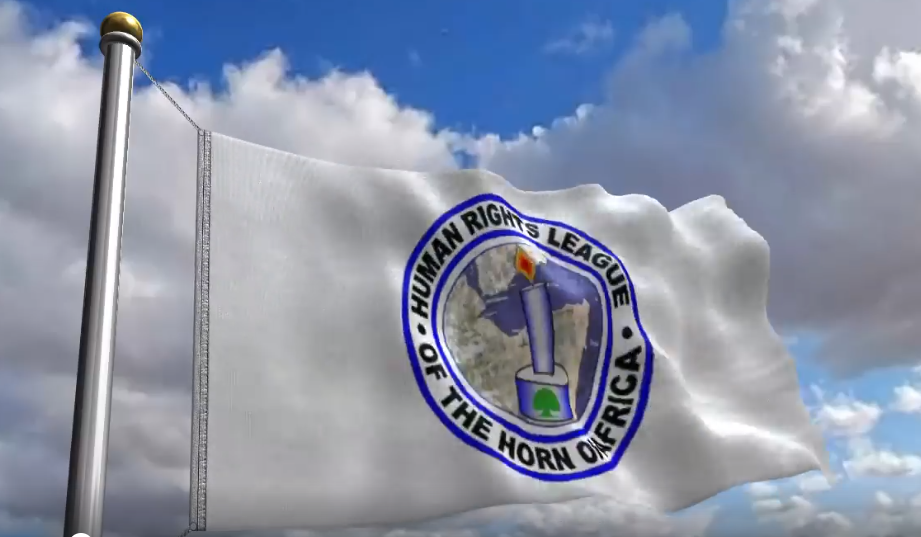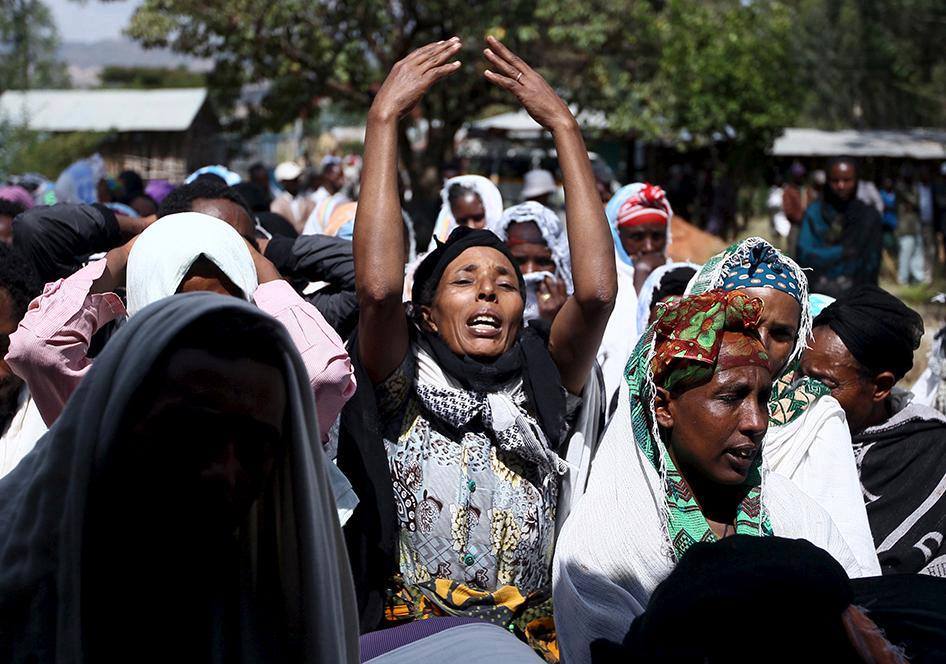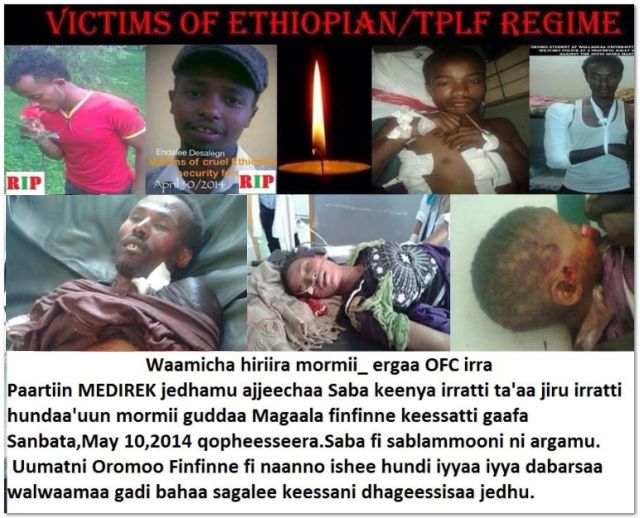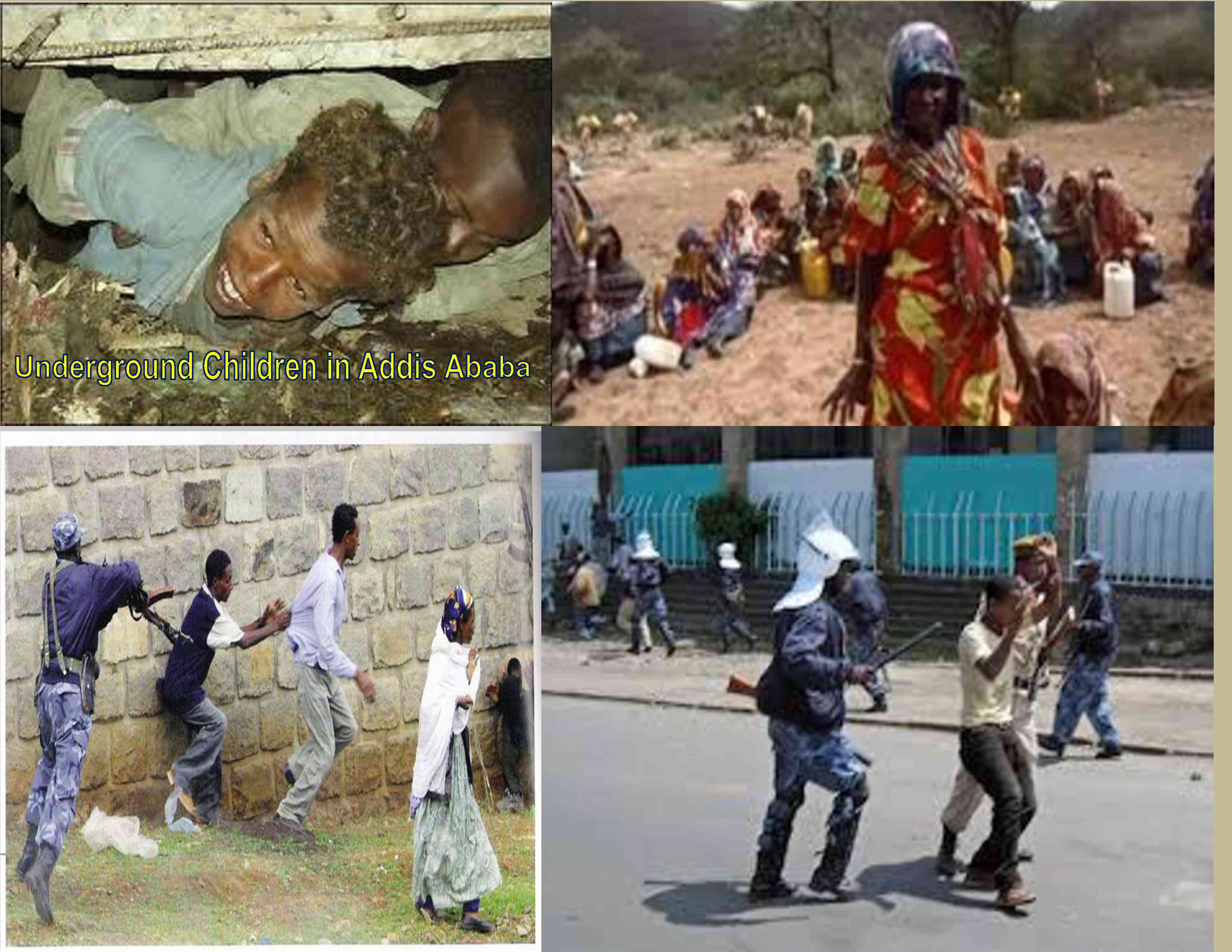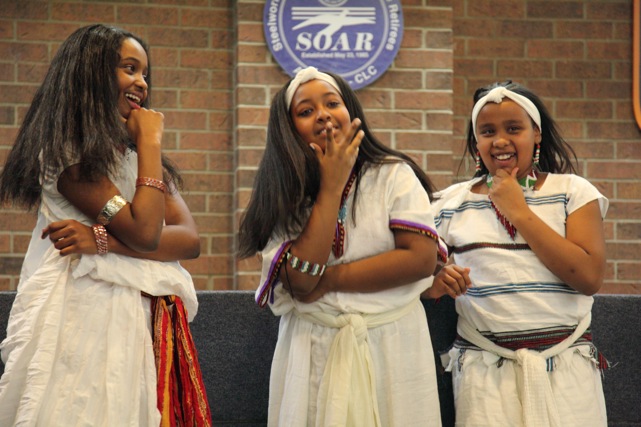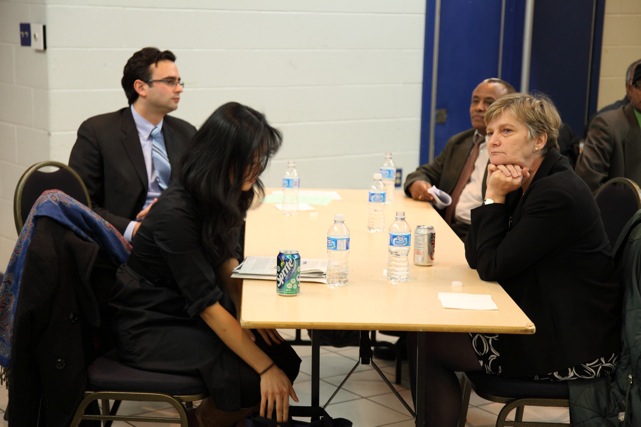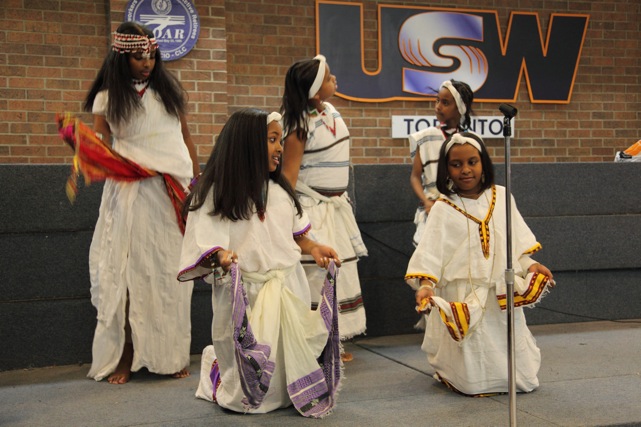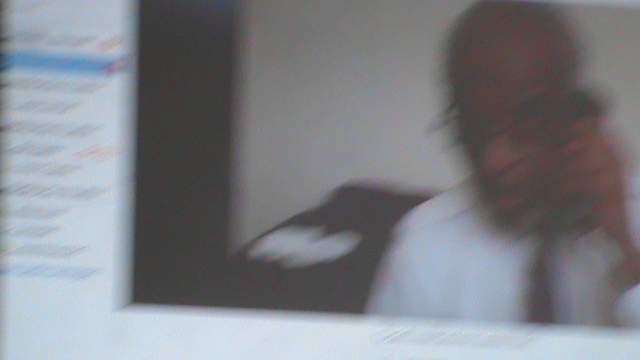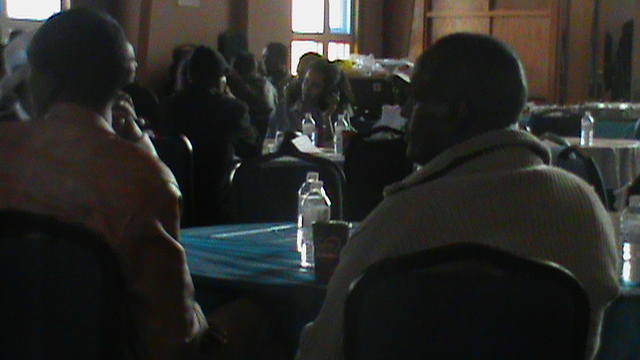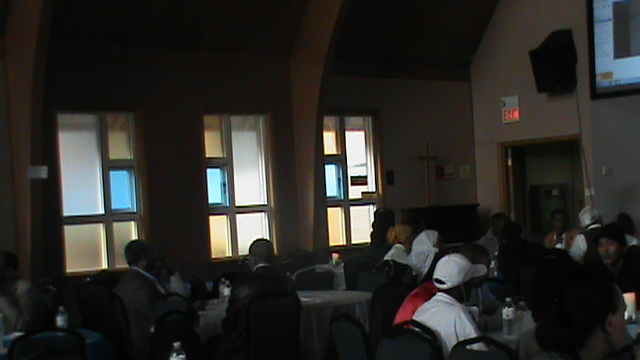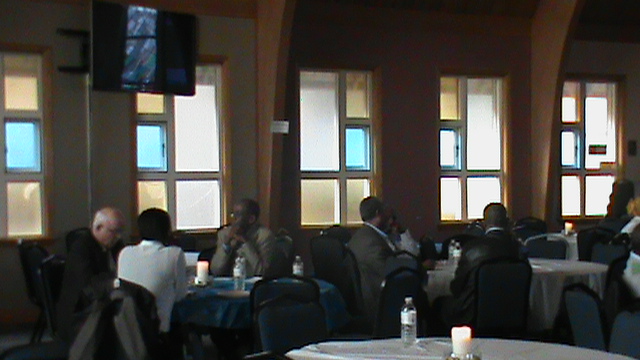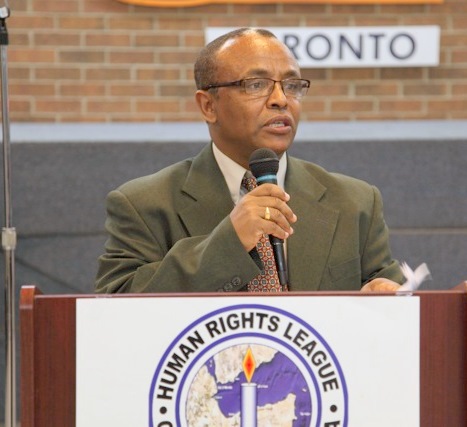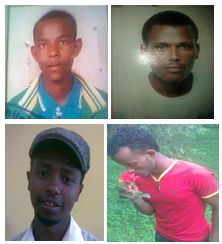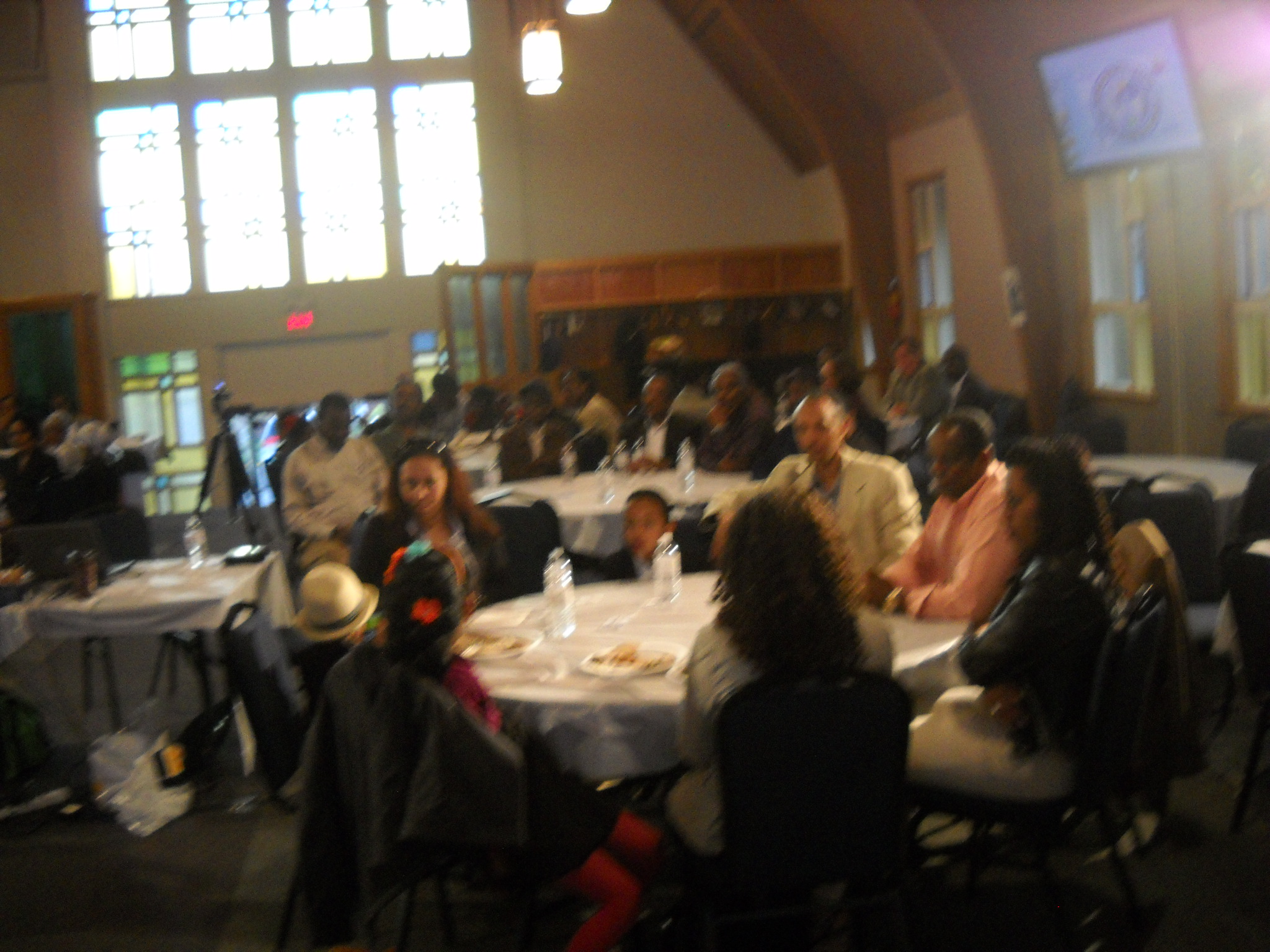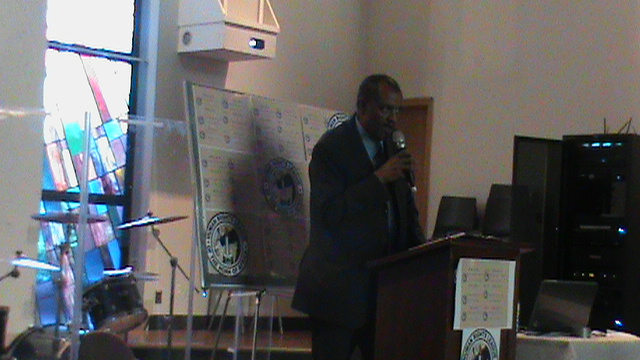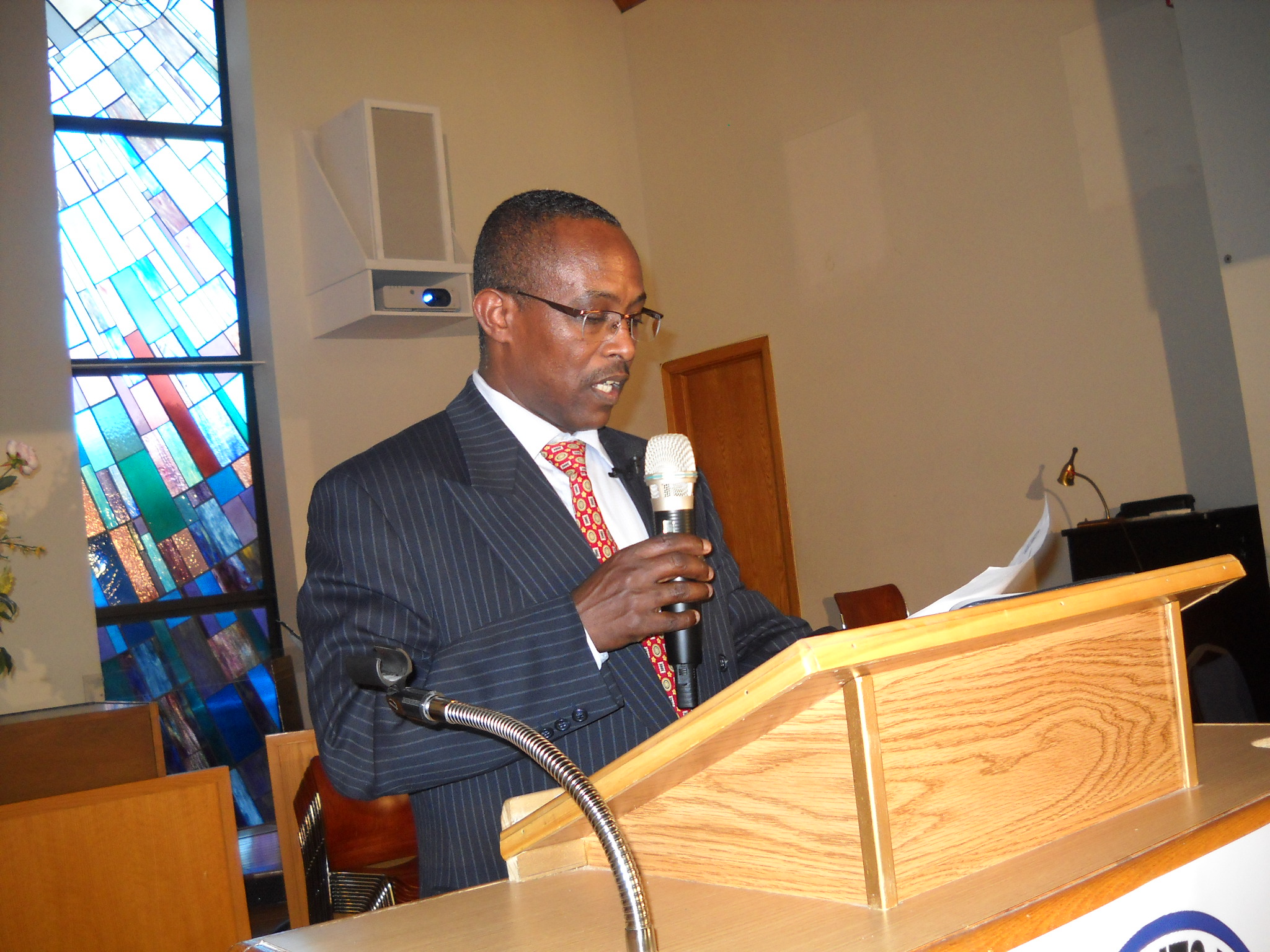HRLHA Calls for International Intervention to end Human Tragedy in Ethiopia
—————————————————————————————————————–
November 6, 2016
As is well known, the current state of volatility in Ethiopia was sparked off when the Killing squad “Agazi special force” started shooting directly at the Oromo high school students peacefully protesting in Ginchi town in Oromia on November 12, 2015.
The crisis that followed has been characterized by senseless killings, torture, abduction and unwarranted imprisonments in concentration camps of those who vehemently opposed the actions of the government force against peaceful protests by those demanding that the government of Ethiopia stop its injustices against the Oromo people and respect their fundamental rights.
This reckless action of TPLF/EPRDF against protestors reignited the grievances of injustice and inequality the Oromo population has faced for over two decades from minority Tigrian elites. In the next few days, the protest quickly spread all over the Oromia regional state. Since then, the protests have included Oromos from all walks of life. After nine months of protests in Oromia Regional State, the Amhara Regional State joined the protest. Meanwhile, the special force Agazi has continued killing indiscriminately the people of both regional states.
International and regional human rights organizations have continued to shed light on the killings, torture, detentions and abductions in Oromia and Amhar Regional States while the world community has remained silent.
The massacre on October 2, 2016 at Irecha, an Oromo Thanksgiving festival where over 1000 Oromos were massacred and thousands wounded- on the ground and from gunships in the air- has changed the situation dramatically. The peaceful protests have turned violent and several government owned properties have been destroyed and more killings and detentions have followed.
On October 8, 2016, the TPLF/EPRDF government declared a State of Emergency to cool down the situation. As the actions of the government show, the State of Emergency was introduced as a cover to continue the killings, torture and detain in concentration camps more Oromos and Ahmaras instead of cooling down the situation. After the State of Emergency was declared, thousands of Oromos and Amharas have been killed and tens of thousands arrested.
The HRLHA has received from its informants a partial list of those picked up from different showa
zones (centeral Oromia) from October 8 – November 2, 2016 and held in Tolai Military camp .
The following are the numbers of abducted Oromo youths detained in Tolai Military Camp presently.
# District Detained in Tolai
Military Camp Detained in Tolai Military – Camp under highest security
1 SulEmbed Articles ulta/Gullale/Caancoo 270 23
2 West Showa 659 87
3 North Showa 229 35
4 Yekka, Lagaxafo, & Sandafa 34 16
5 South West shwa 288 43
6 Burayu, kolfe 67 21
7 Akaki, Kaliti,Galan, & Dukam 265 11
8 Sabata, Nifas silk, Lafto 989 342
9 Ada’a Barga 12 67
Sub Total 2813 645
Grand Total 3,458
The following are the names of Oromos, most youths among the abducted and theire whereabouts are unknown
District Name
West Show Meta-Robii Dessalegn Biru Bacha
West Show Meta-Robii Tadesse Biru Bacha
North Showa Dessalegn Irpasa
North Showa Shimelis Kebede
North Showa Kebede Merga
North Showa Alemayehu Hundessa
North Showa Haile Workneh
North Showa Asefa bayisa
North Showa Abebe Diriba
North Showa Alebayehu Dhibassa
North Showa Shume Abera
North Showa Ayele Urgessa
North Showa Gudeta Wakuma
North Showa Isayas Teshome
North Showa Birhanu Gizawu
North Showa Kebede Chane
# District Name/number
1 South West Shwa -Tulu Bolo Kebede Abera
2 South West Shwa -Tulu Bolo Seyifu Aman
3 South West Shwa -Tulu Bolo Gezahegn Abera
4 West Showa – Meta Robi 105 youths
5 West Showa -Walikite 28 youths
6 West Showa -Ada’a Berga 80 youths
7 West Showa -Akaki Nabish Tamiry
8 West Showa -Akaki Tesfa Niguse
9 West Showa -Akaki Gadissa Tulu
10 West Showa -Akaki Ashabir Alemu
11 West Showa -Akaki Sabaku Worku
12 West Showa -Akaki Basha Abera
13 West Showa -Akaki Gadisa Aseffa
The 2003/2004 Genocide against Darfur in Sudan is a striking lesson; the people there were killed indiscriminately and, more sadly, the perpetrators would go unpunished until it culminated in a full genocide. What is happening in Oromia and Ahmara regional states today resembles more or less what happened at the embryonic stage of the Darfur genocide in Sudan.
Even the AU, whose headquarters is in the center of Oromia/Addis Ababa, gave late voice after thousands of Oromo children, seniors, men and women had been massacred by the TPLF/EPRDF killing squads.
The donor governments such as USA, UK, Canada and government agencies (African Commission on Human and Peoples’ Rights, EU Human Rights Commission and UN human rights council) have expressed their concerns without taking any concrete actions. Such inaction doesn’t reflect the AU’s and the UN’s obligation under their own Constitutive Act, which provides for intervention inside a member state against genocide, crimes against humanity, and war crimes.
This is a cosmopolitan ideal of protecting people inside states against mass atrocities as a matter of common obligation. The Responsibility to Protect (R2P), coined in 2001 under the leadership of the Canadian government and adopted by 150 heads of states and governments in 2005, obliged the international community to intervene to stop atrocities.
As a matter of principle, a state shoulders the primary responsibility to prevent and protect its own citizens against horrific acts, but if it is unable or unwilling to prevent and protect its population from genocide, war crimes, ethnic cleansing and crimes against humanity, the responsibility is thus shifted to the international community. It states, ” when a state is unable or unwilling to protect its population from genocide, war crimes, crime against humanity and ethnic cleansing, the international community has the responsibility to intervene”.
The UN Charter’s first and most essential aim is to “maintain international peace and security”. However, when the UN was first created, it was an enormous undertaking based on hope.
The most immediate motivation for the creation of the UN was to save succeeding generations from the scourge of war, just the kind of war in which Allied powers were then embroiled, and to reaffirm faith in fundamental human rights which were being so fragrantly and brutally violated by the Axis powers.
Today, one critical question on everyone’s lips is whether the United Nations is living up to its mandate, more particularly, of maintaining international peace and security. Amid ongoing human rights crises in Ethiopia it is hard to figure out what exactly the UN & AU have done to uphold their responsibilities. Nevertheless, it is not too late to act today.
For the Ethiopian human rights crisis, two ways can be helpful in restoring peace and stability. In this, the international communities and agencies (AU, EU & UN) can play a decisive role:
• Major donor governments, including USA, UK & Canada, should stop funding the authoritarian TPLF/EPRDF government
• Put pressure on the TPLF/EPRDF government to allow neutral investigators to probe into the human rights crisis in the country as the precursor to international community intervention
Therefore, the HRLHA again calls upon the international community to act collectively in a timely and decisive manner – through the UN Security Council and in accordance with the UN charter on a case-by – case basis to stop the human tragedy in Ethiopia.
Copied To:
• International Committee of the Red Cross
19 Avenue de la paix
1202 Geneva
Switzerland
Tel: +41 22 734 60 01
Fax: +41 22 733 20 57
• UN Security Council
Office of the Ombudsperson
Room DC2 2206
United Nations
New York, NY 10017
United States of America
Tel: +1 212 963 2671
E-mail: ombudsperson@un.org
• UN Human Rights Council
OHCHR address:
Office of the United Nations High Commissioner for Human Rights (OHCHR)
Palais Wilson
52 rue des Pâquis
CH-1201 Geneva, Switzerland.
• Africa Union (AU)
African Union Headquarters
P.O. Box 3243 | Roosevelt Street (Old Airport Area) | W21K19 | Addis Ababa, Ethiopia
Tel: (251) 11 551 77 00 | Fax: (251) 11 551 78 44
Webmaster: webmaster@africa-union.org
•
African Commission on Human and Peoples’ Rights
31 Bijilo Annex Layout, Kombo North District
Western Region, P.O. Box 673 Banjul
The Gambia
Tel: (220) 441 05, 05, 441 05 06
• The US Department of State Secretarate Secretary
His Excellency Mr. John Kerry
WASHINGTON, D.C. HEADQUARTERS
(202) 895-3500
OFMInfo@state.gov
Office of Foreign Missions
2201 C Street NW
Room 2236
Washington, D.C. 20520
Customer Service Center
3507 International Place NW
Washington, D.C. 20522-3303
• UK Secretary of State for Foreign and Commonwealth Affairs
The Rt Hon Philip Hammond MP
Parliamentary
House of Commons, London, SW1A 0AA
Tel: 020 7219 4055
Fax: 020 7219 5851
Email: hammondp@parliament.uk
Departmental
Street,
London, SW1A 2AH
Tel: 020 7008 1500
Email: fcocorrespondence@fco.gov.uk
• Minister of Foreign Affairs (Canada)
His Excellency Stéphane Dion
Write to:
Enquiries Service (BCI)
Global Affairs Canada
125 Sussex Drive
Ottawa, ON
K1A 0G2
Email: Enquiry Service – On line form
Canada
• Minister for Foreign Affairs (Sweden)
Her Excellency Margot Wallström
Switchboard: +46 8 405 10 00
Street address: Rosenbad 4
Postal address: SE 103 33 Stockhol
• Minister of Foreign Affairs (Normway)
His Excellency BørgeBrende
Ministry of Foreign Affairs
E-mail: post@mfa.no
Phone: + 47 23 95 00 00
Address: 7. juniplassen 1, N-0032 Oslo
